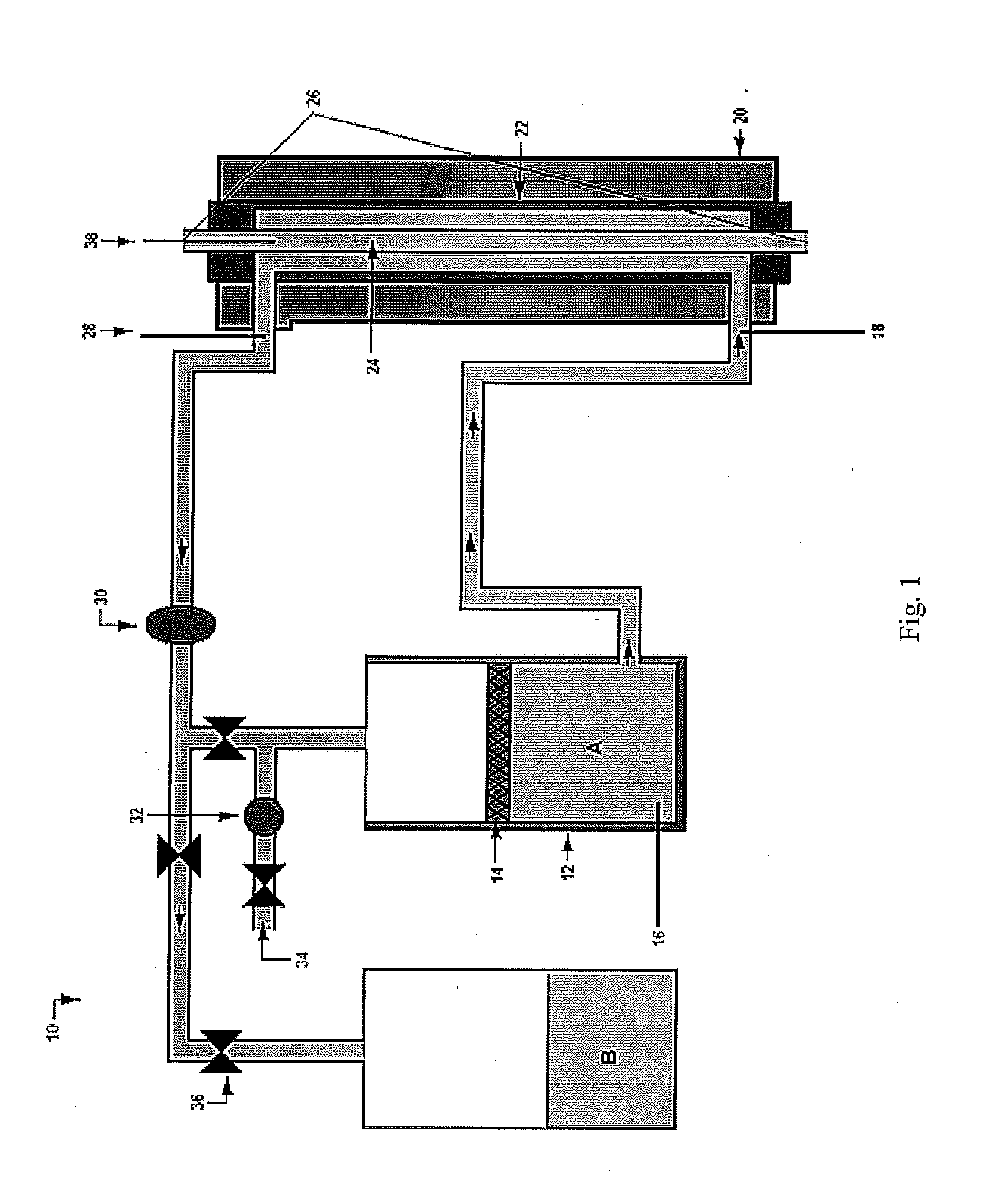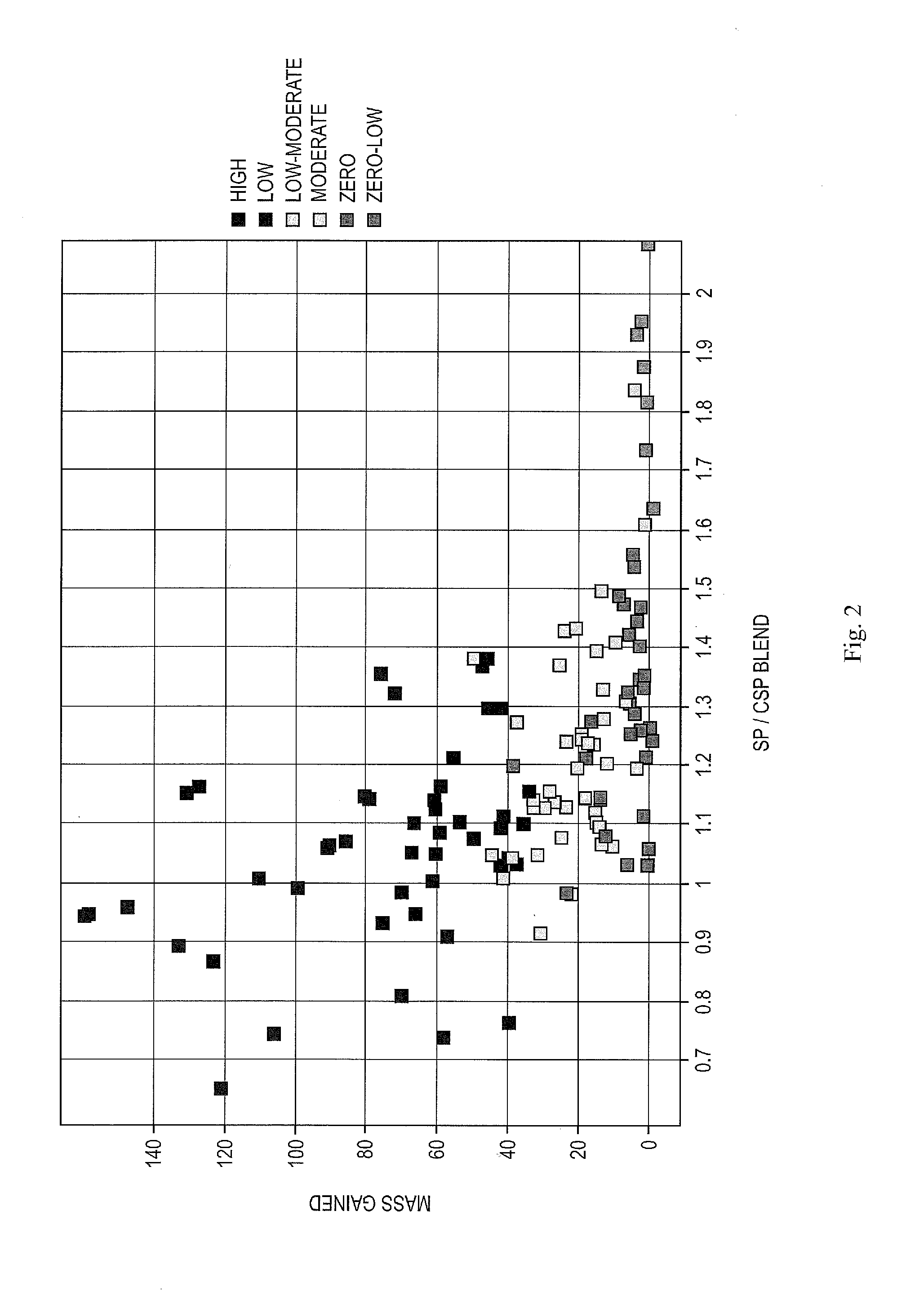Predicting High Temperature Asphaltene Precipitation
a technology of asphaltene and precipitation, which is applied in the direction of weather/light/corrosion resistance, instruments, material analysis, etc., can solve the problems of precipitation, high level of fouling, and unstable asphaltene in crude oil, so as to increase the solvent power ratio, the effect of high level of paraffin
- Summary
- Abstract
- Description
- Claims
- Application Information
AI Technical Summary
Benefits of technology
Problems solved by technology
Method used
Image
Examples
example 1
Testing the Fouling Threshold of Crude Oils
[0088]137 typical crude oil dumb-bell blends were created and subjected to testing using an Alcor HLPS unit as shown in FIG. 1. A fresh heated tube was used for each experiment. The tubes were weighed at the start of each experiment. A constant temperature was maintained along the tube wall.
[0089]The conditions used in the Alcor unit fell within typical test conditions:[0090]Feed Inlet Temperature: 20-100° C.[0091]Wall temperature: 350-500° C.[0092]Oil Flowrate: 1-5 cm3 / min[0093]Test duration: 3-8 hours[0094]Pressure: 300-820 psig
[0095]The hydrocarbon fluids exited the annular space surrounding the heated tube at temperatures falling within the range of 250-400° C.
[0096]Initially during each experiment, the surface of the tube was clean and heat transfer efficiency was high. This resulted in a rapid increase in the feed temperature across the length of heated section, resulting in a steady and relatively high outlet temperature. A maximum o...
example 2
Determining a Relationship Between the Ratio of Solvent Power to Critical Solvent Power and the Threshold Light Paraffin Content
[0100]Further investigation of the blend properties of the feedstocks resulted in the finding that the blends with an unexpectedly high fouling tendency were typically rich in light components, i.e. material boiling at < 150° C.
[0101]The feedstocks were divided into 4 subgroups based on the ratio of solvent power to critical solvent power:
SubgroupRatio of solvent power to critical solvent power (R)1.101.075 1.151.125 1.201.175 1.251.225
[0102]The fouling threshold was set at a mass gain of 30 mg.
[0103]Graphs of mass gain against light paraffin content (% by volume) were plotted and a linear relationship determined. Graphs for the 1.15 ratio subgroup and the 1.20 ratio subgroup are shown in FIGS. 3a and 3b. The threshold paraffin content can be deduced from the graphs as the point at which a line showing the fouling threshold intersects a line plotting the r...
PUM
| Property | Measurement | Unit |
|---|---|---|
| temperature | aaaaa | aaaaa |
| temperature | aaaaa | aaaaa |
| pressure | aaaaa | aaaaa |
Abstract
Description
Claims
Application Information
 Login to View More
Login to View More - R&D Engineer
- R&D Manager
- IP Professional
- Industry Leading Data Capabilities
- Powerful AI technology
- Patent DNA Extraction
Browse by: Latest US Patents, China's latest patents, Technical Efficacy Thesaurus, Application Domain, Technology Topic, Popular Technical Reports.
© 2024 PatSnap. All rights reserved.Legal|Privacy policy|Modern Slavery Act Transparency Statement|Sitemap|About US| Contact US: help@patsnap.com










